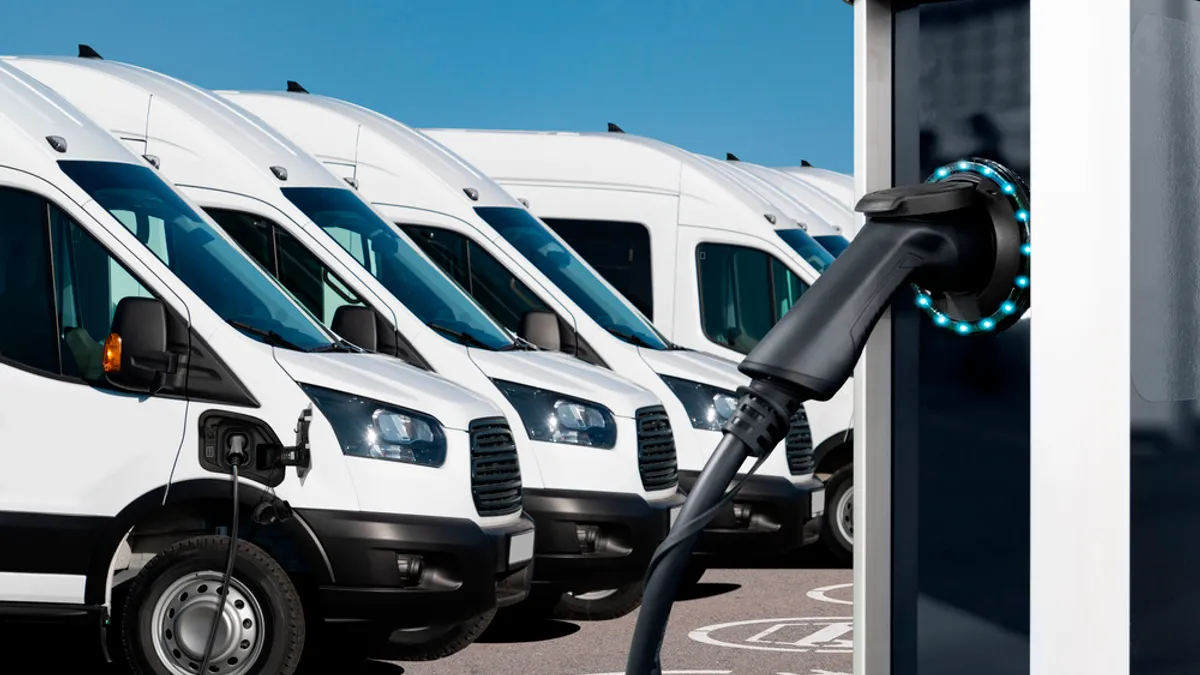Fleet electrification is more than merely one part of the broad societal move toward decarbonization. As companies look to reduce their Scope 1 and Scope 2 carbon emissions, electrifying transportation is emerging as a way to achieve significant carbon reductions with relative ease.
Every fleet type has a different use case: The requirements of a school bus or municipal refuse fleet will be different from those of a last-mile delivery fleet, long-haul trucking, or a utility fleet that responds to emergencies.
Making a successful transition to a fully electric fleet depends on consideration of several aspects of electrification. From operational aspects to facilities and the infrastructure serving the fleet, fleet operators must navigate a wide range of factors, including giving thought to the drivers and employees who will need to learn new ways of interacting with fleets and electrification technology. Getting numerous stakeholders involved early on is critical to any effective transition. Learn more below about the leading priorities and variables that operators looking to electrify their fleets should consider.
Vehicles and Technology
Fleet Assessment
The first essential step is to conduct an analysis of the existing fleet and its operational capabilities. How are vehicles being used? What is the typical daily mileage? What are the dwell times, and where are they located overnight? Telematic data from the fleet can help determine appropriate technology selections.
Market Assessment
Most EV models are light-duty vehicles, with some medium- and heavy-duty options emerging. These might not satisfy 100% of a fleet’s needs, but they could represent an opportunity in the early stages of a conversion.
Vehicle Operations
Public works and utility vehicles have specific functions and can involve widely varying payloads and ranges. Decision-makers need to understand which options on the market meet those functional needs.
Stakeholder Engagement
Numerous stakeholders can lend insight into the specific use cases desired. In addition to the drivers, these can include dispatchers, maintenance staff, and facility and fleet managers.
Vehicle and Infrastructure Procurement
Lead time in the EV market is an important factor. Fleet operators must also be aware of procurement timelines, procurement costs and charging infrastructure.
Facilities and Infrastructure
Charging Technology
Most fleets should utilize a combination of Level 2 (L2) and DC fast chargers (DCFC), but how many of each are needed? Vehicles with overnight dwell times may be suited for L2 chargers, while vehicles with short dwell times or multiple daily routes might need higher-power DCFC.
Utility Coordination
Engage with the electric utility early. When fleet operators do so, their needs can be better planned for and addressed sooner, helping phase their approach.
Energy Management Software
Charging patterns for EVs will matter more than fueling patterns for internal combustion vehicles with the price per kilowatt-hour (kWh) varying based on the time of day. Energy management software can help manage operational costs by optimizing vehicle charging times.
Resiliency and Peak Shaving
In the event of an unplanned power outage, a backup generator or behind-the-meter distributed energy resource could bolster reliability. In addition to providing resiliency, behind-the-meter generation assets can also be utilized for load shaving.
Planning and Funding
Grants and Funding
Funding for electrification is available through different federal and state grants, so it’s important for fleet operators to research which they may qualify for.
Organizational Impacts
Organizations in the planning stage should be asking what impact electrification investments will have on their goals and what those results would mean for the organization.
Project Timeline
It’s a good idea to start building the necessary infrastructure for an electric fleet even while waiting to move forward on vehicles. Phasing this process and building extra capacity for easier expansion later can save money over the long term and save time as the conversion grows.
Develop a Transition Plan
Conduct a cost-benefit analysis to determine the upfront capital expenditures and operational savings EVs can provide to determine the payback period. Once the realistic total cost of conversion is grasped, operators can start building conversion costs into future budgets.
Start With Low-Hanging Fruit
Regardless of incentives, it makes sense to look for the easy wins — fleet elements where the most impact can be attained for the least money spent.
Accelerate Efficient Fleet Electrification
Electrification is no longer a niche market. It is becoming more real to more people, who are realizing that it isn’t going away and must be taken seriously. Fleet electrification will involve plenty of costs, time and complexity. Uncertainty can make it harder to plan, but operators have concrete considerations to help them get started. The fleet operators who will succeed are those already planning, performing analyses, talking to their utilities and budgeting for the future.










